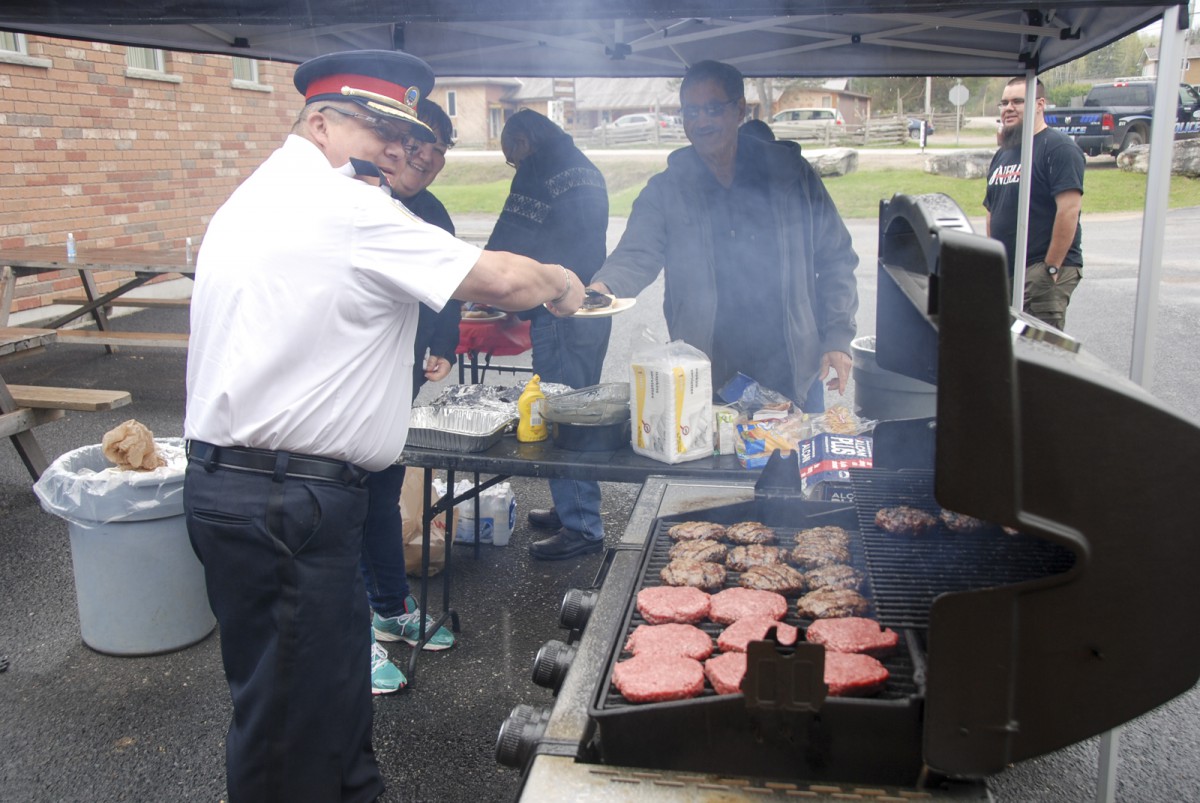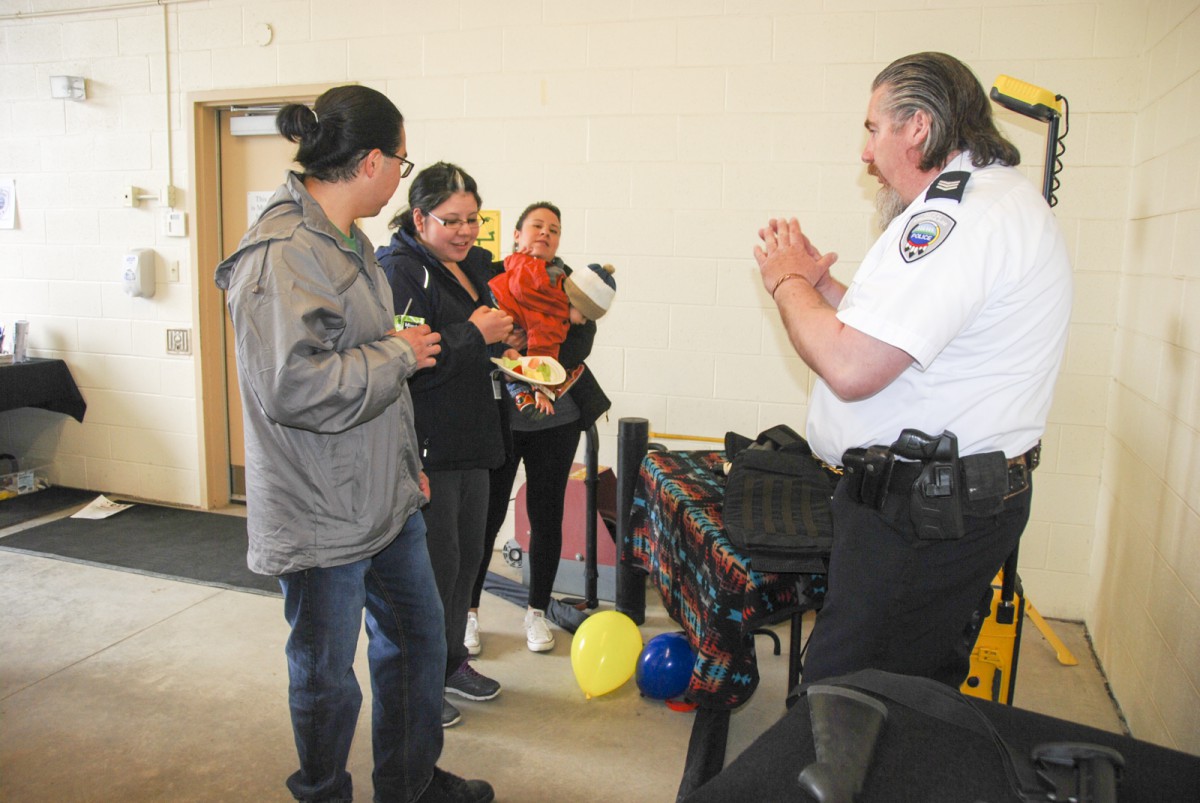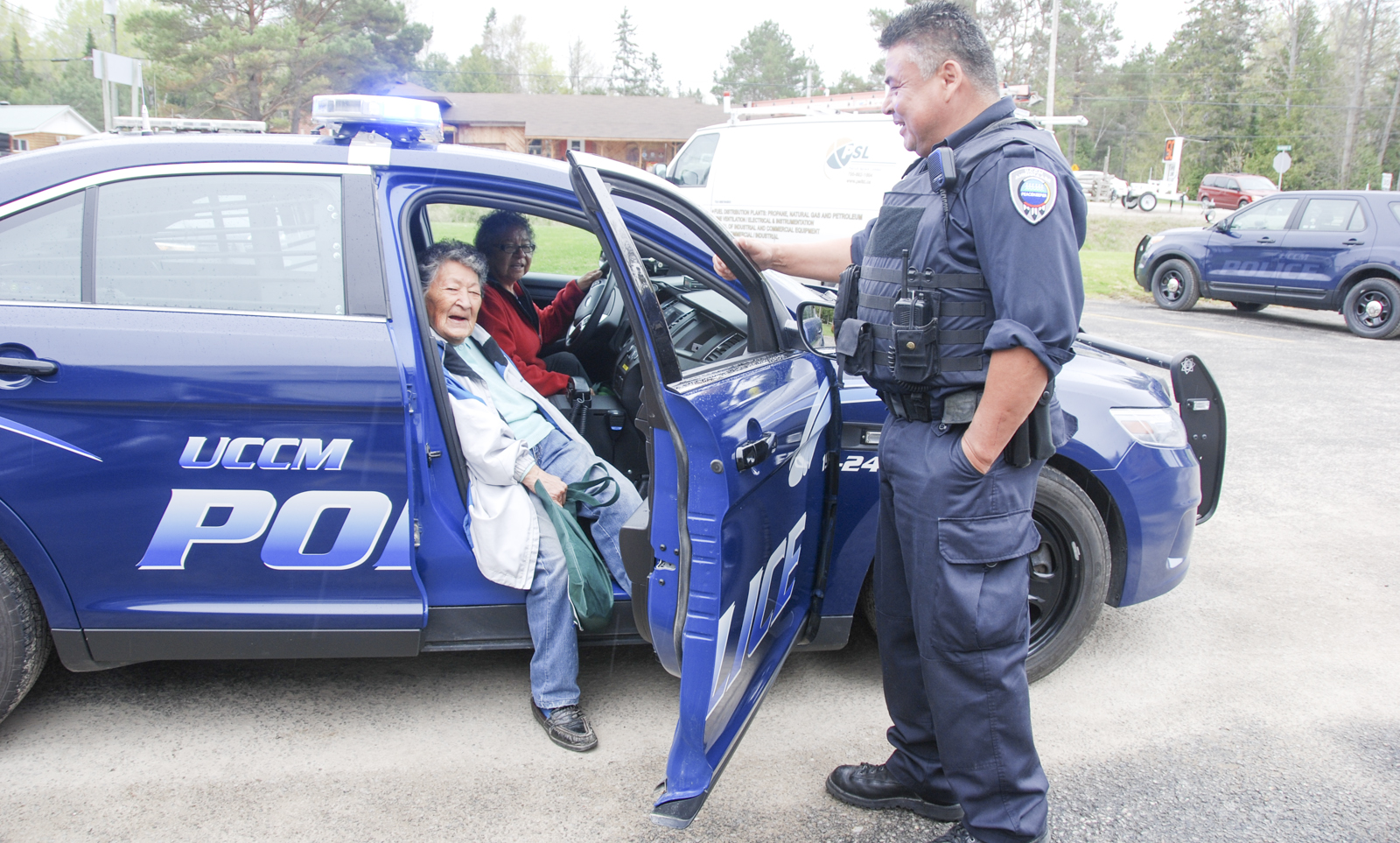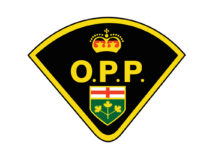MANITOULIN—On Friday, May 15, the United Chiefs and Councils of Manitoulin (UCCM) Anishnaabe Police celebrated its 20th anniversary as a standalone police service in conjunction with Police Week. From tours of the M’Chigeeng station, a barbecue and a police vehicle fleet show and shine, the crowds that attended were a testament to the place the UCCM Police holds in the communities they serve.
Police Chief Rodney Nahwegahbow gave a brief history of the UCCM police, beginning in the mid 1970s when the station was run through the Ontario Provincial Police. Many years ago, on-reserve policing was delivered through the Royal Canadian Mounted Police (RCMP). He credited retired police pioneers Albert Beaudin, Wallace Corbiere, Ray Corbiere and Rendell McDonald for paving the way for the UCCM Police to become the police service it has become today, serving the six First Nations of Whitefish River, Aundeck Omni Kaning, Sheguiandah, M’Chigeeng, Sheshegwaning and Zhiibaahaasing.
In 1995 the force became its own entity, the UCCM Anishnaabe Police, and today has a complement of 18 sworn officers, seven civilian staff and two special constables.
“We were able to celebrate our 20th anniversary during Police Week, which has the theme this year of Discover Policing,” Police Chief Nahwegahbow said. “It’s a time to have police and the public come together and showcase the cooperative effort—we can’t do this without the public’s help.”

“We’re inviting the public to get to know the office, officers and the services we provide,” he continued, stopping periodically to smile and wave at a youngster receiving a station tour from Community Services Officer Murray Still. Police Chief Nahwegahbow explained that the UCCM Police patrol via ATV, snowmobile, bicycle as well as their fleet of cruisers, including SUVs and trucks to get to hard-to-reach places. Officers are also receiving constant training, for example in GPS, sexual crimes, cyber crimes, scenes of crime and Breathalyzer testing, to name but a few specialties. The UCCM Police also has a dedicated crime unit as well as specialized domestic violence officers.
He spoke of the Drug Interdiction squad that has been formed between the UCCM, Wikwemikong Tribal Police and OPP whose goal is to identify those deemed to be suspicious in the trafficking of drugs and to stem the flow of those drugs onto Manitoulin. This, he said, will rely heavily on information provided to them by the public. “We’re seeking more information to actually be useful toward an investigation,” he said, “not information that comes to us sixth- or seventh-hand.”
He reminds the public that UCCM officers are fully authorized to enforce the Highway Traffic Act and Provincial Offences Act on all of Manitoulin’s highways. “Our officers have the power to do so, on First Nations or not,” he said.

It is the police chief’s hope to also raise interest in a policing career among youths who may want to serve their community as an adult. “The turnover is low,” he admitted, a testament to the love of the job for the UCCM officers, “but there will be opportunities.”
Police Chief Nahwegahbow also spoke of the new social navigator position, taken up by Daughness Migwans, and its ultimate goal in educating the community to prevent future crime. “We want to get to the root cause of the problem and stem the tide,” he said.
The idea for the social navigator came during a United Chiefs and Councils of Mnidoo Mnising Tribal Council meeting in 2009 when the chiefs noticed that service providers needed to work more closely together. From this start, Mmaamwi Naadamadaa was formed—a network of UCCMM social providers (UCCM Police, the Tribal Council, Community Justice Program, Ojibwe Cultural Foundation, Kina Gbezhgomi, Mnaamodzawin, Kenjgewin Teg Educational Institute and each band manager from the six First Nations). The social navigator is there to “close the gap” on service delivery for those who are coming into contact with police or for those who are headed down that path, the police chief said. Since Ms. Migwans’ position began in mid-March, she’s had 11 referrals to her program. “To me that’s very promising,” Police Chief Nahwegahbow said.

He noted the staggering numbers taken from the prisoner transport van survey (the van that takes offenders from Manitoulin to and from the Sudbury jail). “Eighty percent of the offenders who take these rides in the transport van are First Nation people,” he said. “To me, this means we have to start looking at an earlier point of contact. The incarceration rate is 23 percent Canada-wide (for First Nations people). Thirty-eight percent of the population of Manitoulin is First Nations.”
While detention for crimes is a necessity, the police chief said his communities need to look toward more restorative justice (an approach to justice that focusses on the needs of each of the victims, offenders and the community) as the program has already proved to be successful a few years in with only a 13 percent rate of recidivism (reoffending) for those who have gone through the program.
Those retirees aforementioned in this article “were basically our pioneers. I credit a lot of our success to those officers and the relationships they built along the way,” Police Chief Nahwegahbow said. “The turnout today reminds us that the community does support their police. I’m proud of our officers and the work they do—they are so committed to the communities they serve.”




